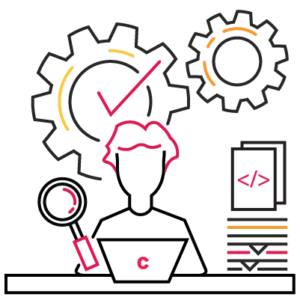Secure Your Migration: Key Atlassian Cloud Security Features
The office was buzzing with excitement about the newly announced migration to Atlassian’s cloud tools. But when the fanfare subsided, Margaret felt a knot in her stomach.
As the head of IT security, she knew the cloud introduced risks—leaked credentials, data exposures, shadow systems spinning up. She flashed back to the chaos when Marketing shared product launches on public Confluence pages. And the mad scramble when an intern posted confidential issues on Jira before deprovisioning.
“Not this time,” Margaret declared. She spearheaded a task force to lock down cloud access and protect their migration. They integrated Jira and Confluence with existing identity systems to centralize user lifecycle management. Minimum permissions limited exposure of projects and pages. Detailed audit logs monitored access to uncover suspicious activity.
The migration commenced without a hitch. Onboarding was swift with automated account provisioning. Data stayed protected within the boundaries they defined. And Margaret slept soundly knowing their Atlassian Cloud instance was secure thanks to proper access configuration.
Like Margaret’s team, yours can also migrate confidently by understanding Atlassian’s robust security capabilities. Read on to learn the key features that enable least-privilege access, end-to-end data policies, and complete visibility, so you can securely unlock the benefits of the cloud.
(This material is based in part on the webinar, Key Atlassian Cloud Security Features to Understand.)
Important security considerations in the Cloud
Migrating to the cloud introduces new security considerations that must be addressed to protect your data when using Atlassian’s cloud-based tools like Jira and Confluence. These include:
- Managing users
- Controlling access
- Monitoring activity
Managing users and controlling access
Proper configuration is critical to restrict permissions and visibility, enforcing who can view and modify information. For example, you can:
- Remove admin rights to limit customizations
- Integrate with identity providers for user provisioning
- Implement data policies to prevent exporting content
Audits and monitoring
Comprehensive auditing is also needed to track access and changes. This includes detailed audit logs that capture each user action across your instance. Beyond auditing past actions, you also need to monitor product usage to ensure licensing compliance and uncover potential shadow IT systems.
While the cloud vendor handles lower infrastructure security, customers must leverage access management features like those covered in the transcript to lock down their instance. This limits data exposure from unauthorized internal or external access. Weak identity and access controls make it difficult to govern user provisioning and prevent access abuse.
With proper configuration guided by security best practices, companies can realize the benefits of the cloud without compromising on protection. Restricting access and implementing robust auditing gives organizations confidence that their sensitive data is secure after migrating platforms like Jira and Confluence to the cloud.
Leveraging Atlassian Access for Cloud security
Atlassian Access is a critical component for managing security when using Atlassian’s cloud-based applications. It provides identity management, access controls, auditing, monitoring, and governance capabilities that enhance protection and compliance.
Identity provider integrations and SSO
A key benefit of Atlassian Access is integration with identity providers like Okta and Active Directory. This allows organizations to connect their existing users and inherit identity attributes into Atlassian user profiles. Access levels and permissions can then be assigned based on attributes like department, location, job function etc. rather than individually maintained.
Single sign-on (SSO) is enabled through Atlassian Access to allow streamlined authentication using corporate credentials. Users can log in once through a supported identity provider and seamlessly access assigned Atlassian cloud applications without re-entering credentials.
Automation and global policies
Atlassian Access also facilitates automated user provisioning and deprovisioning. Instead of manual account creation and removal, identity providers can push group membership changes to instantly add or revoke access. This maintains alignment of access with central user stores.
Access policies configure how Atlassian products are secured across an organization. Global permissions, restricted spaces, and project-based schemes control what users can see and do within Confluence and Jira.
Monitoring usage and access
Robust monitoring and auditing capabilities are imperative for maintaining security and compliance in the cloud. Atlassian Access provides centralized visibility into product usage and user activity across Jira, Confluence, and other Atlassian cloud applications.
Extensive audit logs capture granular user actions, recording details like the date, user, location, and specific activity. This produces detailed forensic evidence for security investigations or regulatory audits. Audit data reveals permission misconfigurations, unauthorized access attempts, and policy violations.
Atlassian Access also enables insights into product adoption and licensing consumption. Cloud admins can view trends in active usage across the tools, including peak volume times. Tracking this information helps inform licensing requirements and identify unused products that present security risks.
Uncover shadow IT by monitoring domain usage across your organization. Atlassian Access detects other departments deploying cloud instances that can bypass security controls.
Providing IT and security teams with actionable visibility into user behavior, product adoption, and policy adherence is imperative in the cloud. Atlassian Access delivers integrated monitoring and auditing capabilities that promote security, drive compliance, and maximize existing investments. These insights are invaluable for securing expansive cloud environments and diverse Atlassian toolsets.
Locking down Jira and Confluence
To properly secure Atlassian cloud applications, organizations must leverage the granular access control capabilities within Jira and Confluence.
Jira security features
Jira allows multi-layered security schemes:
- Global permissions provide site-wide access levels
- Permission schemes associate projects with groups that can have custom roles
- Issue security adds a further restriction to limit viewing and editing of specific tickets
These layers allow fine-grained control over what users can see and do within each Jira project.
Confluence security features
Similarly, Confluence divides access by global, space, and page-specific permissions:
- Global permissions apply site-wide
- Space permissions enable scoping security by department or team areas
- Page restrictions can lock down viewing and editing of sensitive pages
Access can be granted directly to users, by group membership, or completely anonymous for public content.
Content visibility settings are also critical in Confluence.
- Disabling the “View User Profiles” permission removes identifying information of editors and commenters for anonymous users.
- The “Allow Anonymous Access” setting governs if unlicensed users can view content, which is important to restrict ahead of cloud migrations.
Between the various permission schemes in Jira and the global, space, page, and content visibility options in Confluence, organizations have the needed controls to lock down cloud instances. Matching permissions to the sensitivity of projects, spaces, issues, and pages prevents unauthorized exposure and edits across both tools.
You don’t have to go it alone
This was a lot of information, and successfully implementing security features is a vital step in optimizing the return on your Atlassian Cloud investment. But securing your migration doesn’t have to be daunting.
Our experts have executed countless successful Atlassian Cloud migrations and can provide guidance tailored to your environment. Whether you need assistance planning roles and permissions, selecting appropriate identity integrations, interpreting auditing data, or any other aspect of your migration, we’re here to help.
Don’t let security concerns prevent you from realizing the benefits of Atlassian’s cloud solutions. Contact us today to discuss your migration plan and ensure your organization has the tools and knowledge needed to lock down cloud access from day one.






